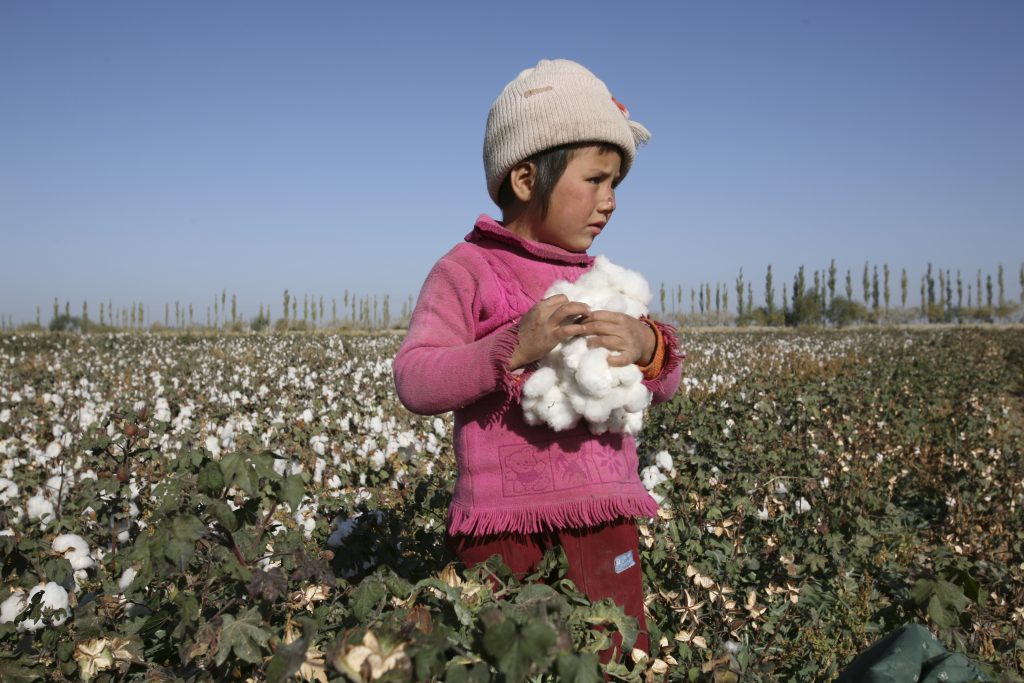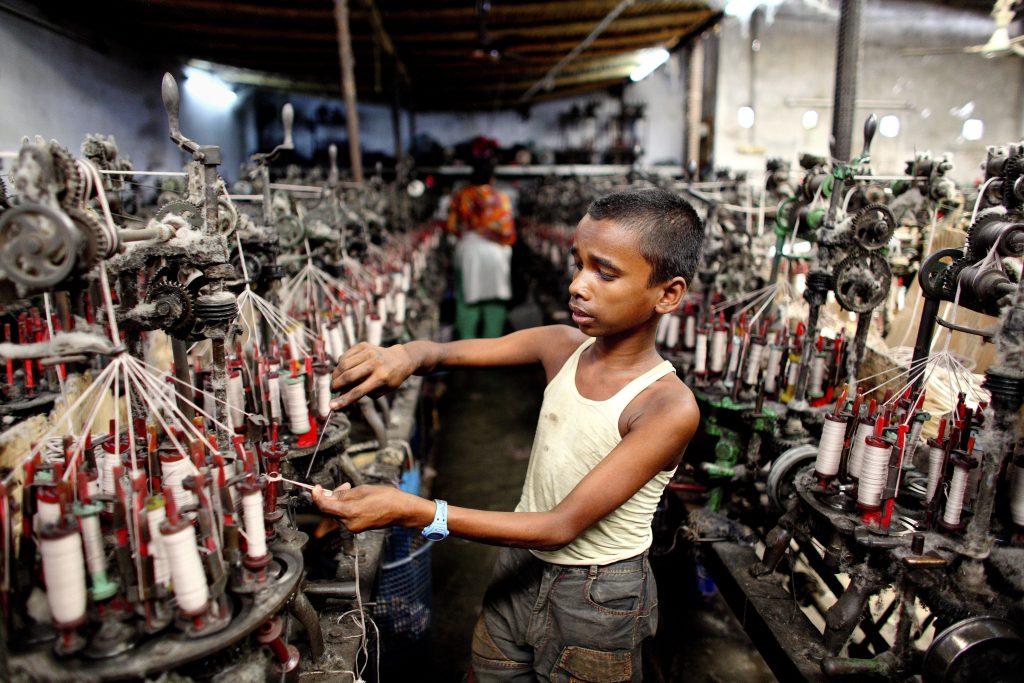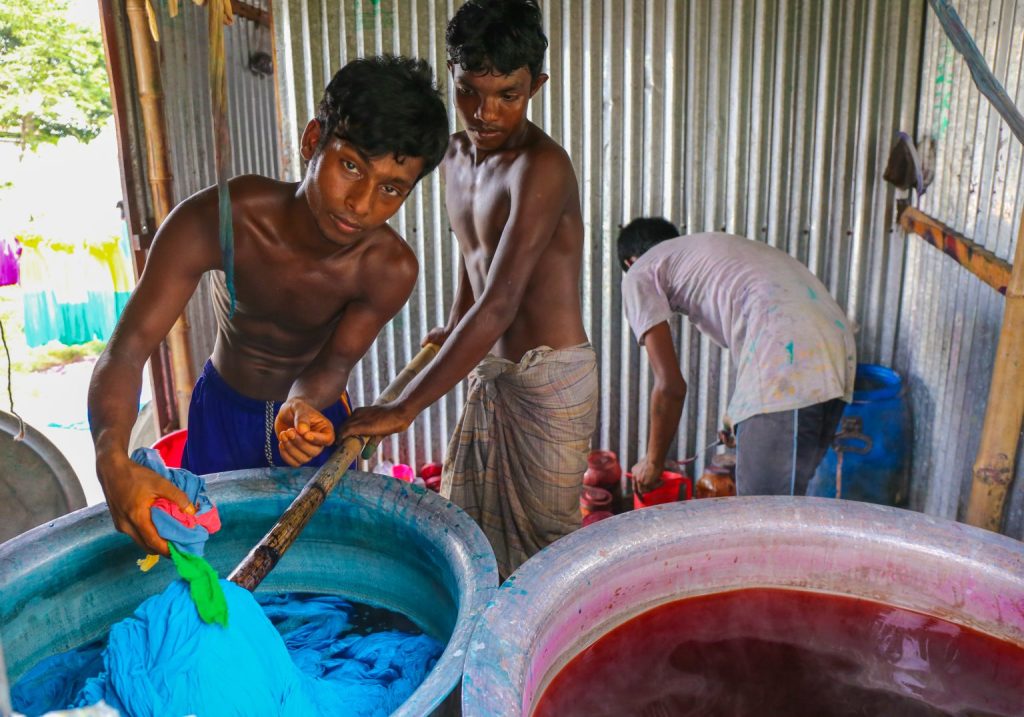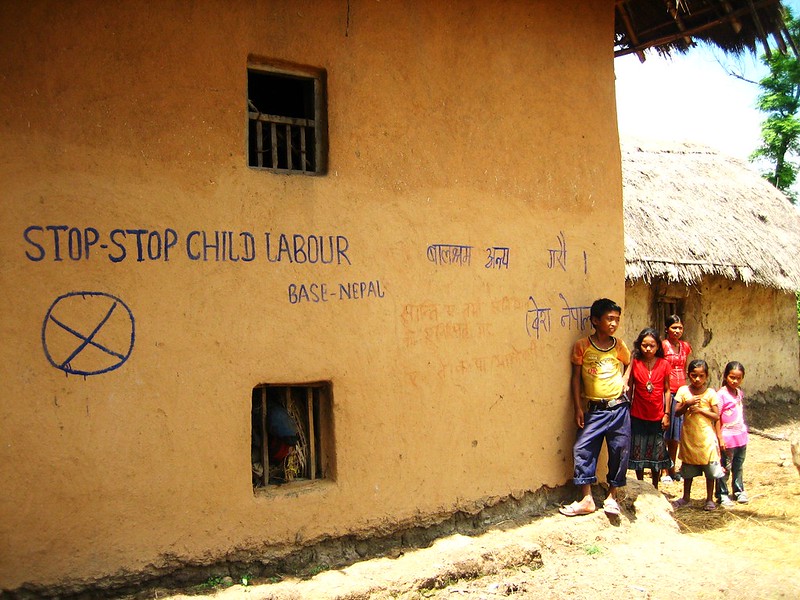There is a disturbing amount of child labour involved in fast fashion. The United Nations Convention on the Rights of the Child, signed in 1989, encourages countries to protect children from exploitation. Hence, child labour is illegal in most countries. Despite this, there are 168 million children worldwide who have no choice but to work.
Fast fashion plays a big role in this. Our global consumer culture helps make fast fashion happen. Sadly, the rush to make cheap fashions quickly squeezes workforces to produce as much as possible in faster timeframes.
People used to buy clothes only a few times a year. However, since the late 1990s, fast fashion changed this. Owing to rising demand and lower costs, fashions now change rapidly as people buy more and more clothes. We now have thousands of styles at low prices. However, is it worth it?

Child labour in fast fashion
As clothing companies race to the bottom with cheaper and faster production, many move their production facilities to countries with softer labour laws and cheaper workforces.
Consequently, many employers hire children for several reasons:
- Textile production uses low-skilled workers.
- They can be paid very low wages.
- They are often seen as easier to control.
- Some managers consider children to be better for certain tasks, such as picking cotton.
Children work at every step of the production, from harvesting cotton seeds to sewing buttons.
Many workers, not just children, have no option but to subject themselves to inhumane, extremely low-paying work just to survive. They often must work 14-16 hours a day for seven days a week. In some cases, they must stay until 2-3 am during peak days.
This particularly affects those in impoverished regions around the world. In some instances, such as this example in Southern India, recruiters actively seek out children from worse-off families by making false promises to their parents. Despite claiming to give them three meals a day, good accommodation and a good paycheck, the reality is that children are often trapped within these factories and made to work.
The result is less a job, and more akin to modern slavery.

One of the most infamous cases is in Uzbekistan. For two months out of every year, their government forces one million people, including countless children, to leave their jobs and schools to harvest cotton with little to no pay.
Though this has reduced in recent years, the problem still exists. Regardless, companies in several countries, particularly in much of South Asia and Eastern Europe, continue forcing children to work in horrendous conditions.
Fast fashion also harms the environment. We make over 100 billion items of clothing every year – nearly 14 for every person on Earth. Many of these are also made from cotton, which is extremely water intensive. Just one kilogram of cotton, for instance, needs 7,000 to 29,000 litres of water. Avoiding cotton is not an option, as synthetic clothes shred tiny microfibres which pollute our oceans and waterways.
Consequences of child labour in clothing manufacturing
Working for many hours in dangerous conditions without breaks harms children physically and mentally. Many suffer from exhaustion, mental illnesses, and injuries from heavy machinery. Harsh chemicals, dyes and fibre dust and chemicals can also hurt their health in the long-term.

Since these children have to work 14-16 hours a day, they cannot go to school, spend time with their peers or even see their families. It deprives them of education opportunities, often condemning them to low-skilled, low-paying work for much of their lives. This means them and their families often remain in poverty.
Despite these human rights violations, environmental effects and the children who suffer for our $5 t-shirts, many retailers still insist on producing more and more clothes. Some of the biggest names in fast fashion including H&M, Zara, UNIQLO, and many newer online stores contribute to this.
The problem of rooting out child labour in fast fashion
Child labour is illegal in most countries, especially in Western nations such as the EU or the US. However, the products of child labour are still sold in these countries. How is that possible?
The supply chain is very complex, with clothes going through countless factories and processing plants before they reach our shops. Therefore, even if brands have rules banning child labour, it is easy for suppliers to hide child labour from them. Suppliers, for instance, often falsify records or take advantage of loopholes in labour laws to avoid scrutiny.
Additionally, if children need money to support their families (or other reasons), they may have no choice but to work to survive. This often keeps them stuck on a cycle of poverty.
The United Nations has created 17 Sustainable Development Goals. Goal 8 specifically targets giving everyone decent job opportunities, so no one has to suffer through low-paying and abusive working conditions. One of the main obstacles to this goal is the millions of exploited children. Therefore, it aims to encourage nations to work together to stop child labour in all forms by 2025.

What we can do to end child labour in the fashion industry
There are many ways we can fight fast fashion and child labour. It starts with realising your power as a consumer. There are many brands which sell sustainable (and stylish) clothes. Also known as slow fashion, it stands in contrast to fast fashion by being made to last. This means you can buy fewer clothes.
Alternatively, you can recycle your old clothes or buy from second-hand stores, or think about whether you need new clothes in the first place. For instance, only 20-30% of clothes in most women’s wardrobes are ever worn.
Another way is to support organisations that fight child labour such as UNICEF, the ILO and the UNDP.
Finally, the more people that know about this issue, the greater the difference we can make. It is important to start a conversation about the consequences of fast fashion and raise awareness in our own circle by reading, talking, writing, and sharing.
We at the THRIVE Project have created this blog to raise awareness for the issues which prevent a thrivable future. If we want a world where we can all live in harmony with nature, we have to raise awareness for the issues that matter to us.
Therefore, we encourage you to share this blog on your social media channels and start a conversation with them.























